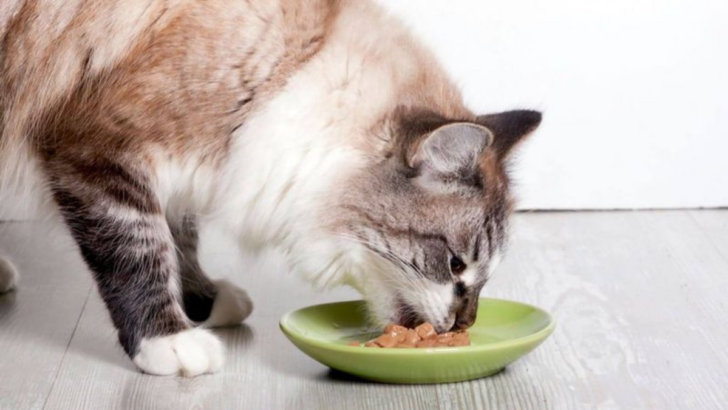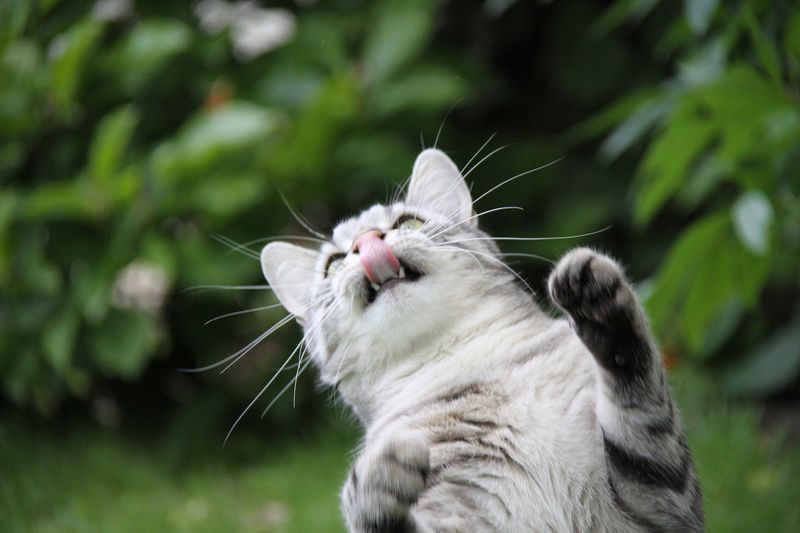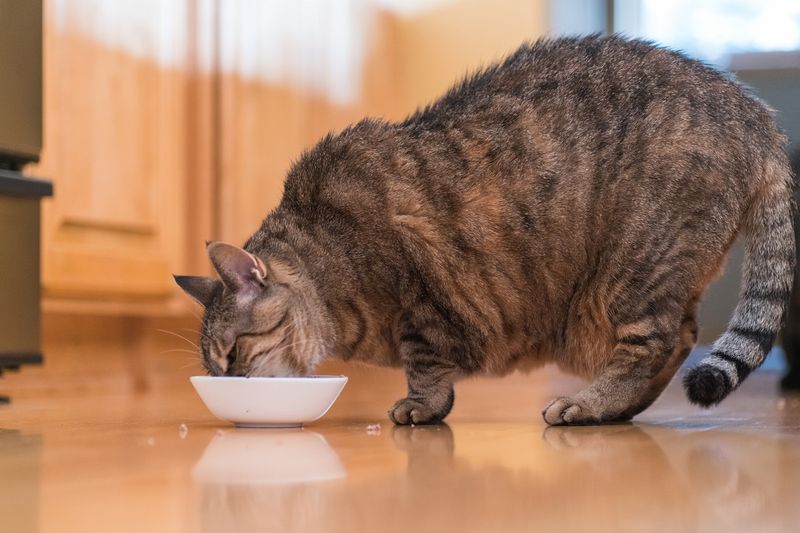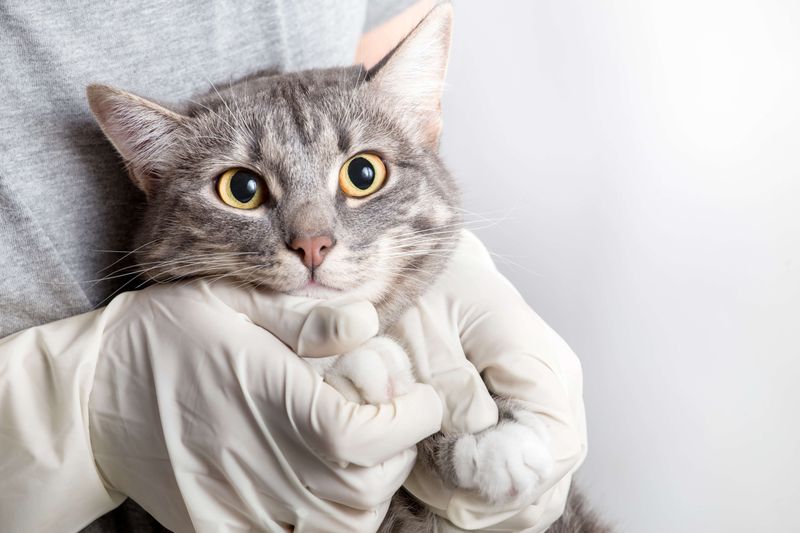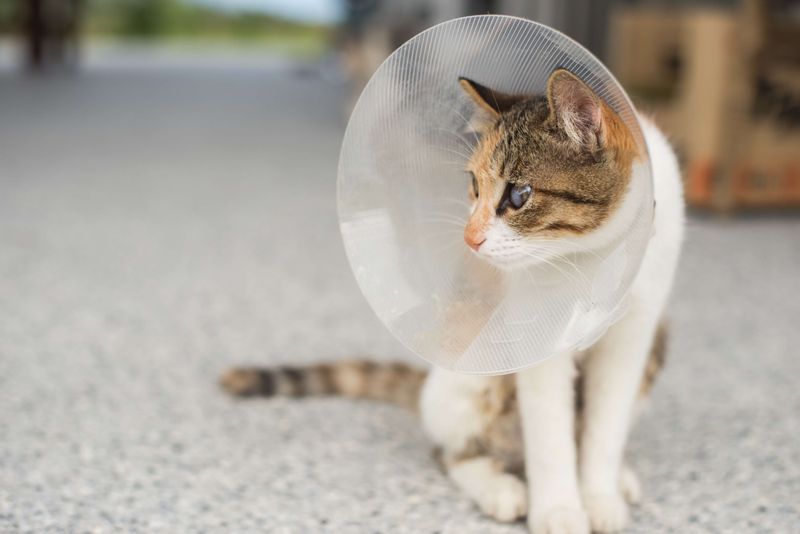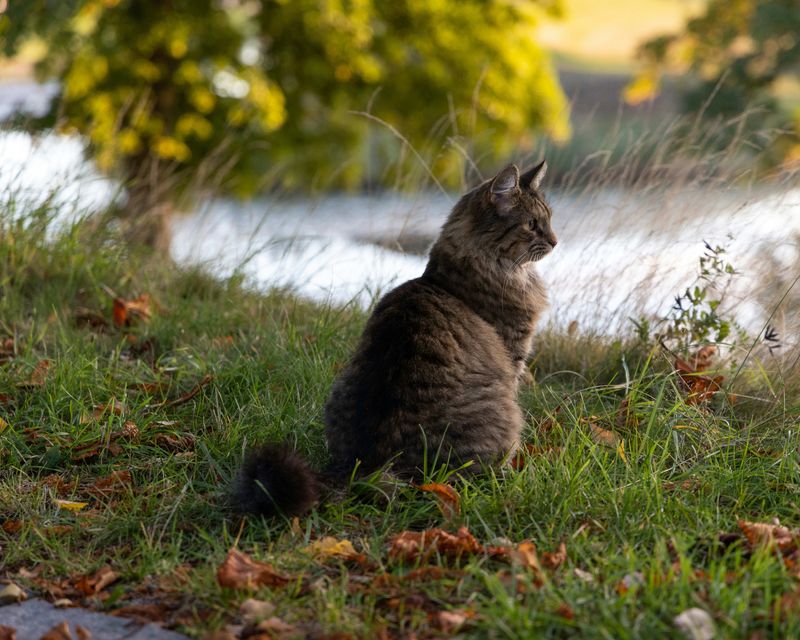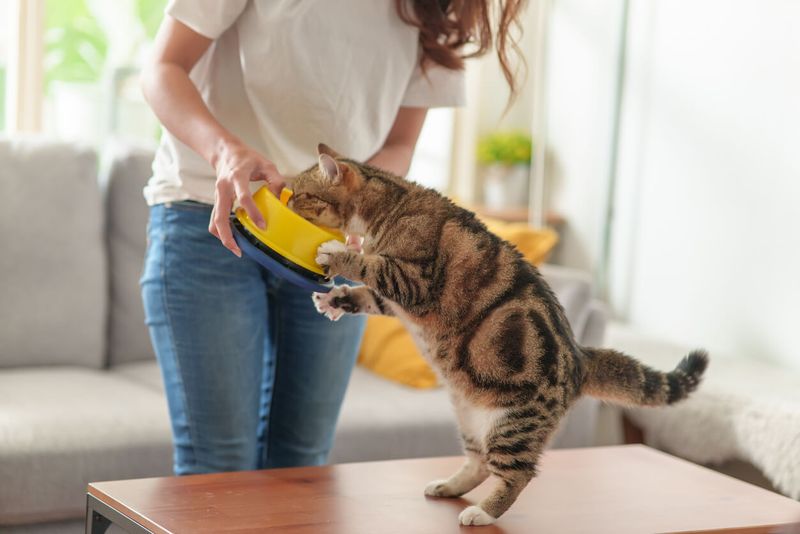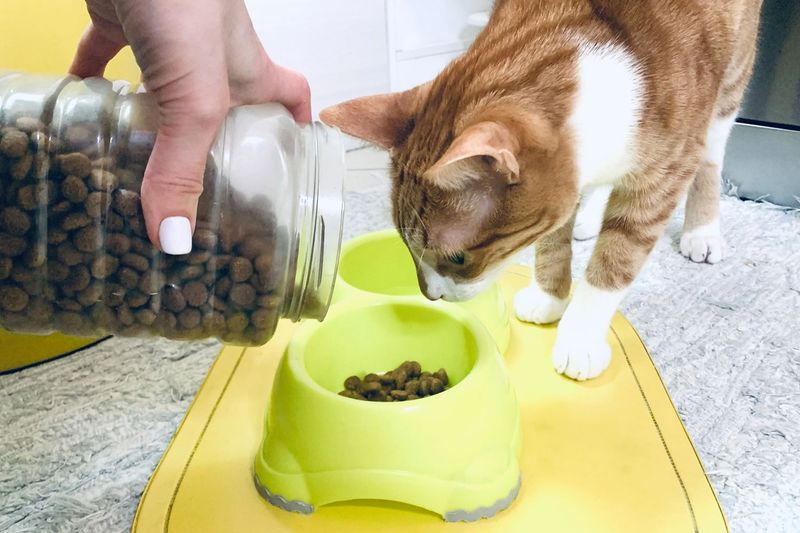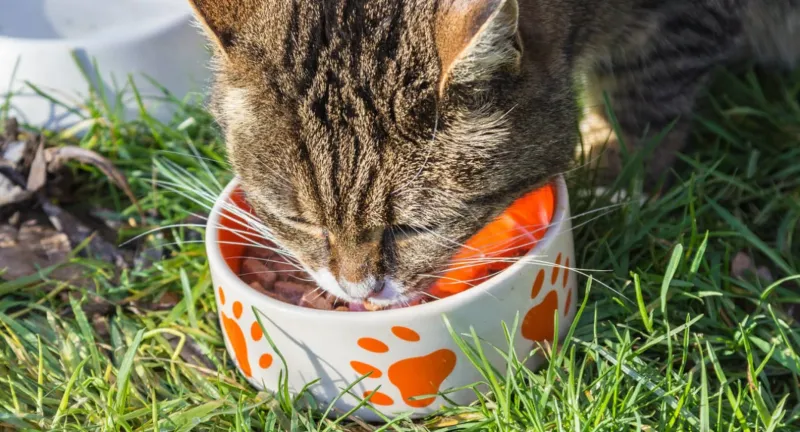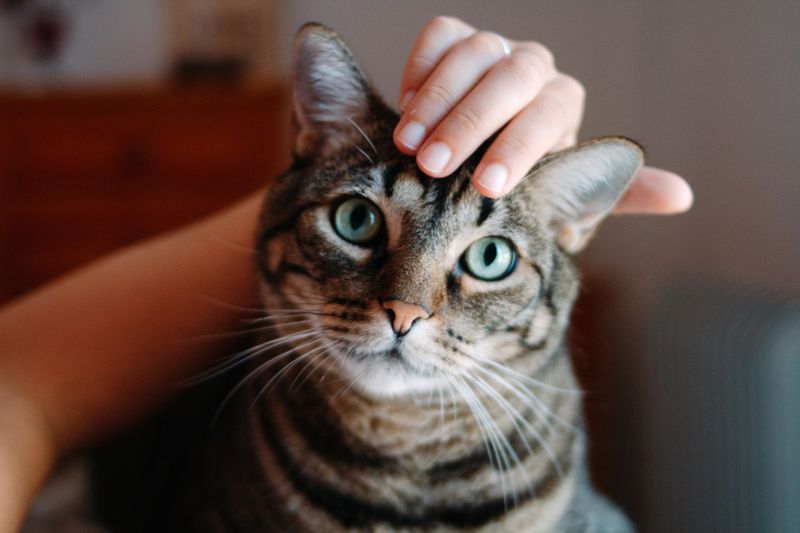Feeding a cat goes beyond simply placing food in a bowl. It involves recognizing and addressing their specific needs to maintain their overall health and well-being. Several elements, such as age, activity level, and health status, all influence how often a cat should eat.
The frequency of feeding plays a significant role in a cat’s energy, metabolism, and general mood. Every cat is different, and their dietary needs may change throughout their life. Understanding the factors that affect their feeding schedule can help create a routine that supports their growth, energy, and longevity.
A balanced feeding schedule is key to a happy, healthy cat. Recognizing factors like activity level, weight, and preferences ensures that nutritional needs are met. By considering these 14 factors, it’s easier to establish an effective feeding plan that contributes to the overall satisfaction and well-being of your feline companion.
1. Age of Your Cat
Age is a crucial factor in determining feeding frequency for your cat. Kittens need several small meals a day to support their rapid growth and energy levels. As they mature, their metabolism slows, requiring fewer meals. For older cats, their dietary needs change again.
They might need more frequent, smaller meals to accommodate their aging digestive systems and potential health issues. Always consider the specific needs at each life stage. Consult with your vet for tailored advice on feeding your cat at different ages, ensuring they receive appropriate nutrition throughout their lifetime.
2. Activity Level
Your cat’s activity level significantly influences how often they should eat. Active cats, like those constantly playing or exploring, burn more calories and require more frequent meals. Conversely, couch potatoes or less active cats might be prone to weight gain if overfed. Balancing their caloric intake with their activity level helps maintain a healthy weight.
Monitor your cat’s behavior and adjust their feeding schedule as needed. Providing enrichment and playtime can also help manage their energy expenditure and ensure they remain fit and healthy. Regularly assess your cat’s activity to fine-tune their feeding regimen.
3. Weight Goals
Whether your cat needs to lose, maintain, or gain weight, their feeding schedule plays a pivotal role. For overweight cats, controlled portions and scheduled meals can aid in weight loss. Underweight cats may require more frequent feeding with nutrient-rich foods to achieve their ideal weight. Maintenance of weight necessitates a balanced approach, ensuring caloric intake matches energy expenditure.
Regular weight checks and adjustments in their diet are essential. Always consult your veterinarian for guidance on setting realistic weight goals and modifying the feeding routine to meet these objectives for your cat’s optimal health.
4. Health Conditions
Special health conditions may require cats to follow specific diets and feeding schedules. Diabetic cats, for example, need meals at regular intervals to help regulate blood sugar. Cats with kidney disease often thrive on a diet that’s low in phosphorus and protein. Understanding these dietary adjustments is vital for maintaining your cat’s health.
Collaborate with your veterinarian to create a feeding plan tailored to your cat’s medical requirements. This ensures they receive the necessary nutrients while managing their health condition effectively. Regular check-ups and monitoring are vital to adjust their diet as needed.
5. Dietary Preferences
Just like humans, cats have their own taste preferences which can affect their feeding schedule. Some cats favor wet food, while others prefer dry kibble. Providing a mix or alternating between types can prevent boredom and ensure balanced nutrition. Observing your cat’s reactions to different foods helps in creating a varied and enjoyable diet plan.
It’s important to introduce new foods gradually to monitor for any adverse reactions. Catering to their taste while ensuring nutritional content is balanced keeps them satisfied and healthy. Maintaining variety aligns with their natural instincts as hunters.
6. Size and Breed
Cats’ dietary needs are influenced by both their size and breed, affecting how frequently they should eat. Larger breeds, like the Maine Coon, generally require more food throughout the day, while smaller breeds need less. Breed-specific metabolic rates and nutritional demands also come into play, further influencing feeding schedules.
Understanding your cat’s breed-specific dietary needs can help you create a feeding schedule that meets their energy requirements. Researching breed characteristics and consulting with your vet can provide insights into the optimal feeding frequency for your cat, ensuring their health and vitality.
7. Spaying/Neutering
Spaying or neutering your cat can affect their metabolism and appetite, often leading to weight gain if not monitored. After surgery, their activity levels may decrease, requiring adjustments in their feeding schedule. Providing a balanced diet with controlled portions helps manage their weight post-surgery.
It’s important to monitor their body condition and consult with your veterinarian on adjusting their diet and feeding frequency. Spayed or neutered cats can lead healthy lives with the right feeding strategies. Regular check-ins with your vet ensure their dietary needs are met without contributing to unnecessary weight gain.
8. Indoor vs. Outdoor Living
Whether your cat is an indoor or outdoor pet can dictate how often they should be fed. Outdoor cats may require more calories due to their active lifestyle and energy expenditure from exploring. Indoor cats, with a more sedentary lifestyle, might need fewer meals to prevent weight gain. Understanding the lifestyle differences helps in crafting an appropriate feeding schedule.
Regularly assessing their weight and adjusting portions based on activity levels is crucial. Providing enrichment and play for indoor cats can also help manage their weight while keeping them mentally stimulated and satisfied.
9. Feeding Methods
The method by which you feed your cat can impact how often they eat. Some owners use automatic feeders to provide measured portions throughout the day, while others prefer traditional bowl feeding at set times. Each method has its benefits depending on your lifestyle and your cat’s needs.
Automatic feeders can offer convenience and precise portion control, which is ideal for busy households. Conversely, manual feeding allows for more interaction and observation of your cat’s eating habits. Choosing the right method enhances your cat’s feeding experience and helps you manage their diet effectively.
10. Nutritional Needs
Understanding your cat’s nutritional needs is key to determining their feeding frequency. Cats require a diet rich in proteins and specific nutrients like taurine. Meeting these nutritional requirements ensures they stay healthy and active. Providing a balanced diet with the correct portion sizes helps in maintaining their overall well-being.
Regularly reviewing the nutritional content of your cat’s food and consulting with your vet ensures their diet meets all necessary requirements. Adjusting meals based on life stages or health changes can further enhance their nutrition. Prioritize a nutrient-dense diet to support their lifestyle.
11. Economic Considerations
Feeding your cat involves economic factors that may influence meal frequency and food quality. Budget constraints might lead to choosing more affordable food options or adjusting the quantity of food. It’s important to balance cost with quality to ensure your cat receives adequate nutrition. Researching budget-friendly brands that do not compromise on nutritional value can be beneficial.
Planning meals and buying in bulk may also reduce costs. Prioritizing essential nutrients within your budget helps maintain your cat’s health without overspending. Economic considerations should align with providing the best possible care for your feline friend.
12. Consistency and Routine
Cats thrive on consistency and routine, making regular feeding times essential. Establishing a routine helps in managing their behavior and digestive health. Cats often feel more secure and satisfied with predictable feeding schedules. Adhering to set times aids in monitoring their appetite and health, quickly identifying any changes.
Routines also prevent overeating and promote a stable weight. Consistency in feeding reinforces positive habits and strengthens the bond with your pet. Maintaining a structured schedule benefits both you and your cat, enhancing their overall well-being and promoting a harmonious household dynamic.
13. Allergies and Sensitivities
Food allergies and sensitivities require careful attention to feeding frequency and diet composition. Identifying allergens is crucial to prevent adverse reactions. Common allergens include certain proteins or grains found in commercial cat foods. Working with your vet to identify safe options can help manage allergies effectively.
Hypoallergenic diets or limited-ingredient foods often provide relief and can be integrated into regular feeding schedules. Monitoring your cat’s response to new foods is essential. Tailoring their diet to avoid allergens ensures they remain comfortable and healthy, minimizing the risks associated with dietary sensitivities.
14. Hydration Needs
Hydration is a key factor in determining your cat’s feeding schedule, especially if they primarily eat dry food. Providing ample fresh water encourages proper hydration, essential for overall health. Cats on wet diets often have better hydration levels but still require access to clean water. Introducing water fountains can stimulate drinking in cats, promoting hydration.
Adjusting meal frequency and type may aid in maintaining hydration, particularly in warmer climates. Keeping a close eye on their water intake and ensuring they stay hydrated complements their feeding routine. Prioritize hydration alongside nutrition for complete care.
